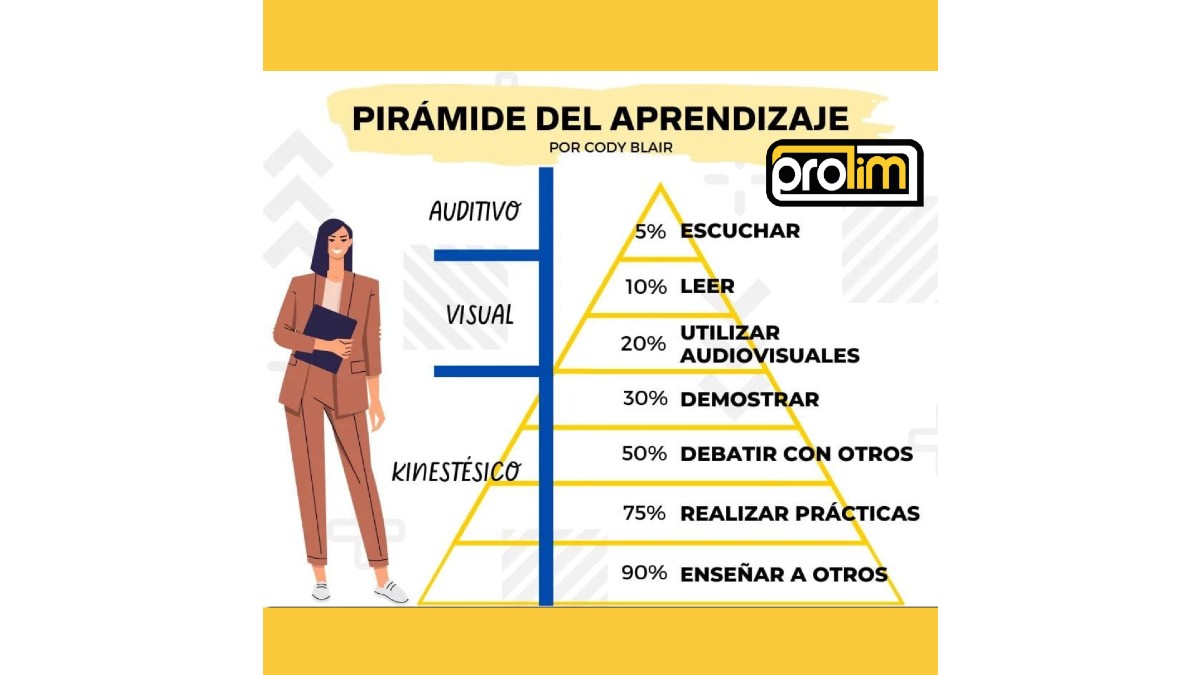CleanTec Industry News
Optimizing Professional Development Through Learning
Expired
International. As stated by the Prolim Group, "ina constantly evolving world of work, the key to staying competitive and relevant lies in embracing learning throughout our professional lives. Cody Blair, an expert in study techniques and author of the book "Ace Your Teacher Interview", has designed the Work Learning Pyramid, a powerful tool that offers a solid structure to continuously improve skills and knowledge in the work environment. We will explore this valuable professional development tool in detail."
Levels of the Work Learning Pyramid
Cody Blair's Work Learning Pyramid is made up of six levels, each representing different approaches to acquiring and retaining knowledge. These levels are essential to optimize our learning process:
1. At the top of the pyramid is teaching others, where sharing the knowledge acquired with someone else results in the retention of 90% of the information. Explaining a topic to another person demonstrates a deep understanding and strengthens our skills.
2. Active practice, applying what has been learned in real or simulated work situations, leads to retaining approximately 75% of the information. Practice reinforces understanding and hones skills.
3. Engaging in activities such as group discussions, debates, and problem-solving results in information retention between 50% and 75%. These interactions stimulate critical thinking.
4. Observing demonstrations, either by visualizing someone performing a task, allows you to retain between 30% and 50% of the information. Visual comprehension is valuable in this process.
5. Although common, reading allows you to retain about 10% of the information. Although it is an initial step, it is better complemented by other levels of the pyramid.
6. The lowest level involves simply listening, retaining about 5% of the information. Despite being a starting point, listening is still essential for learning.
That is, the pyramid suggests that teaching others is the most effective strategy, closely followed by active practice and active learning. Observing demonstrations is also presented as a valuable tool for retaining information. These strategies, when combined and applied consciously, can be key to optimizing professional development and knowledge retention in the workplace.
Strategies for using the work-based learning pyramid
For effective learning, combine different levels of the pyramid. After reading about a topic, for example, try practicing it and then teaching it to a colleague. "Apply these principles in your daily work. After learning something new, look for opportunities to teach it, practice it, and actively apply it. Record your learning experiences and how you apply them to be aware of your methods. Ask for feedback to make sure you apply what you have learned correctly," explains Grupo Prolim through the information shared on its website. .
Cody Blair's Work Learning Pyramid emerges as a valuable tool for those looking to optimize their professional development by understanding and applying different levels of knowledge retention.
By Carlos Soto, Managing Director of Grupo Prolim.



